It’s been raining non-stop for more than a week. You were hoping for a sunny weekend to go out and take some colourful landscapes, but you are now torn between curling up by the fire or wrapping yourself up in the warmth of the bed covers. You are thinking that there isn’t any light worth chasing. It’s grey, it’s cloudy, and it’s miserable.
Yet, can you really be so sure that there is nothing out there worth shooting?
It might sound odd to you but I’ve never minded the rain. I’ve always liked the sound of it, always appreciated rain sequences in films and always looked with curiosity at photographs that feature it.
I think that rain or very cloudy days (if we want to talk about light) is always the ideal time for a training session. The reason is simple: you have to force your eye to look for less obvious things. You train yourself to look for details. You avoid classic wide-angle scenes that might have looked interesting bathed in an interesting light, but are clearly banal without.
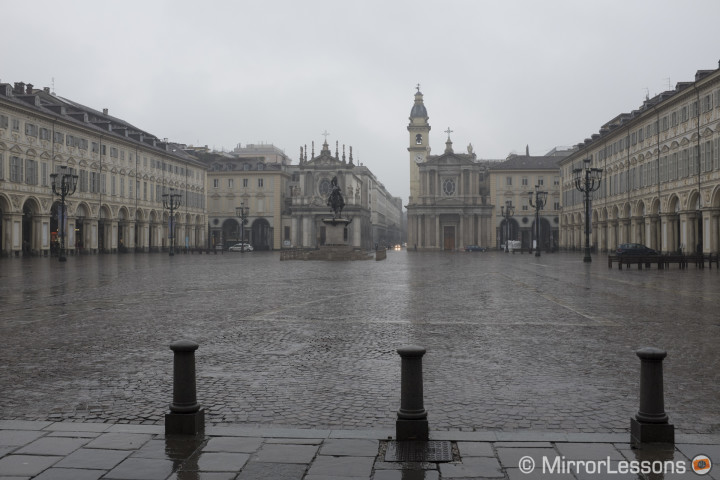
A little bit of post-processing can help but most of the time, you still end up with a relatively uninteresting picture.
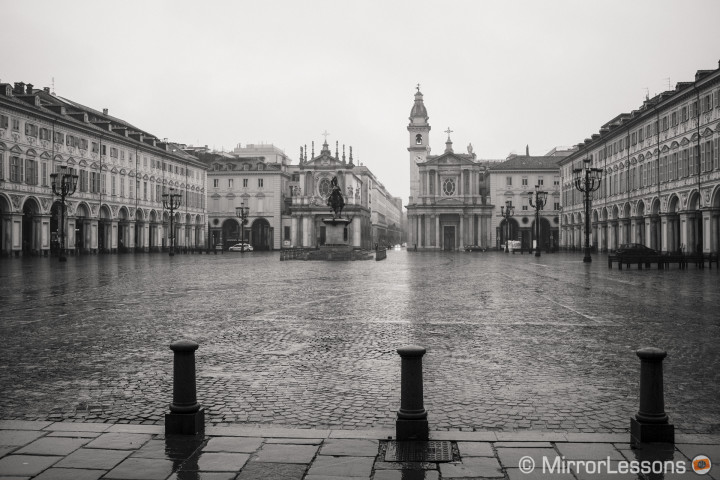
On days like these, you don’t seek the light because, photographically speaking, there isn’t any. You don’t seek high contrast or shadows either, because there aren’t any.
So the only thing left is to look for stories.
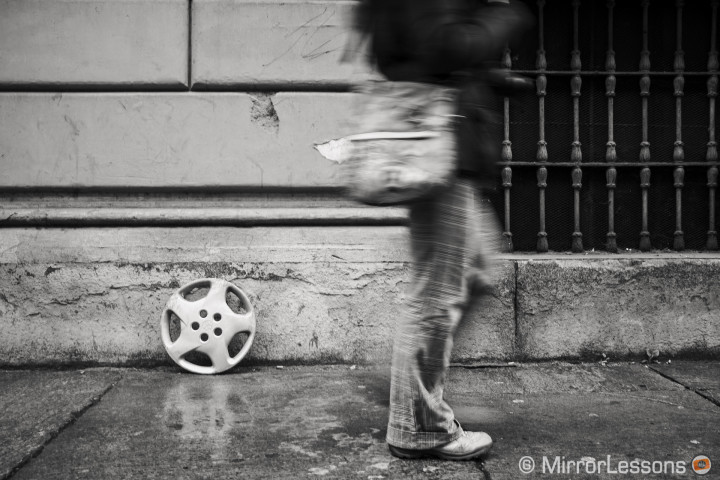
In the picture above, I spotted this lone wheel rim lying against the wall on the sidewalk. I asked Heather to walk in front of it a couple of times, setting a slow shutter speed to give a little bit of dynamism to the photo. I was quite pleased with the result.
Your photo doesn’t have to be a masterpiece, but it should deliver a message or tell a story. The way I see it, it is simply an “exercise in style”. Often you will come back home with nothing really exciting, but unless you try, you will never know for sure.
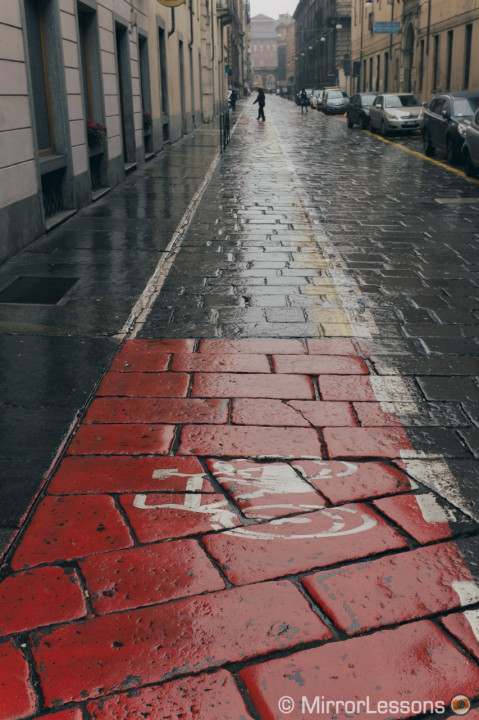
If rain becomes too intense, you can always find refuge under balconies or inside an arcade. You never know what you might find there as well.
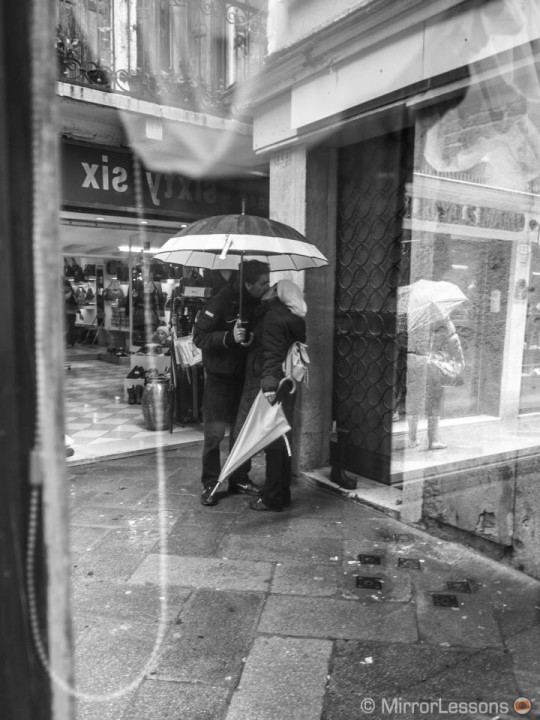
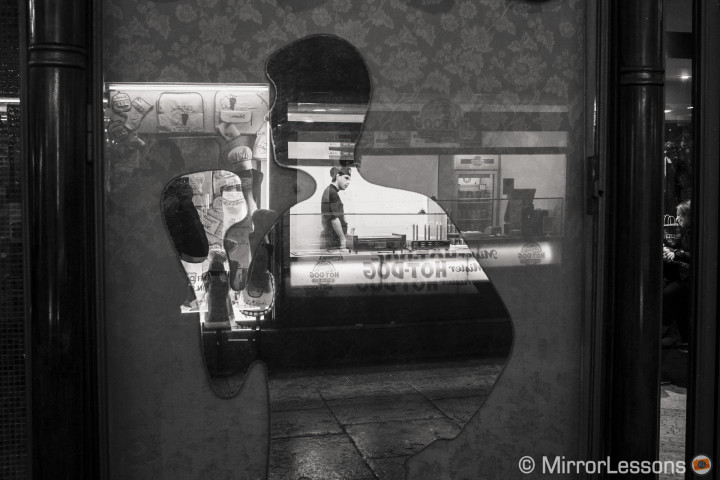
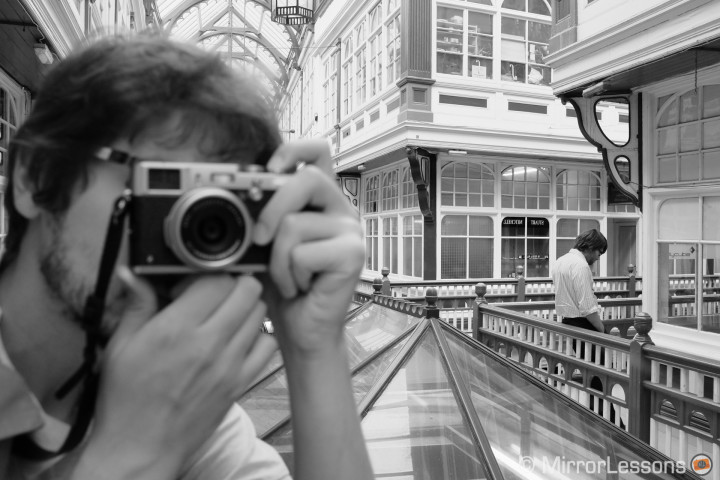
Walking around my home city of Turin makes it easier to look for something different because I know the place so well and have photographed it extensively. But this kind of exercise can also be useful when you travel. Have you ever been to a capital city for a short holiday and visited it under heavy rain? We cannot always be so lucky, can we?
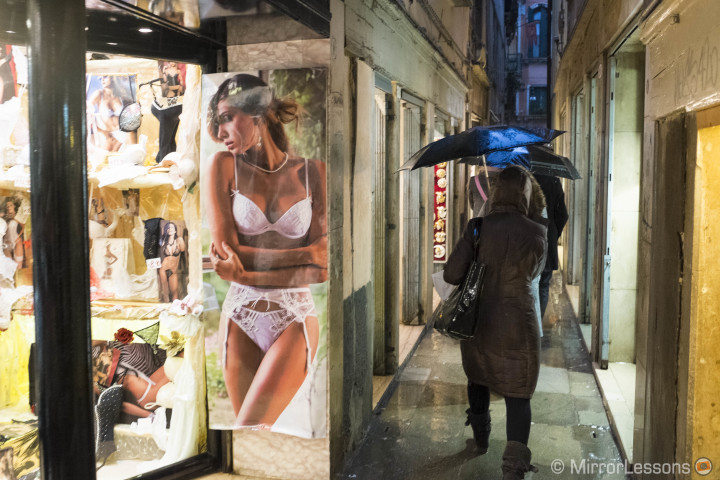
When I received the Fuji X100s last year, I went to Venice for a five-day holiday with Heather and her parents. The first three days were the definition of gloomy, with rain almost all day. In that case, I had the excuse of having to review the camera, and it was certainly a good excuse to force myself to take pictures. (Plus, I would say that Venice is beautiful no matter the weather!)
Even though it is true that taking pictures for review purposes is a little different from other kinds of photography, I always try to take photos that make sense and mean something. Many factors can influence the outcome but I always try to adapt myself to the situation I find myself in: “Ok – it’s raining, but let’s see how can I make the best of it.”
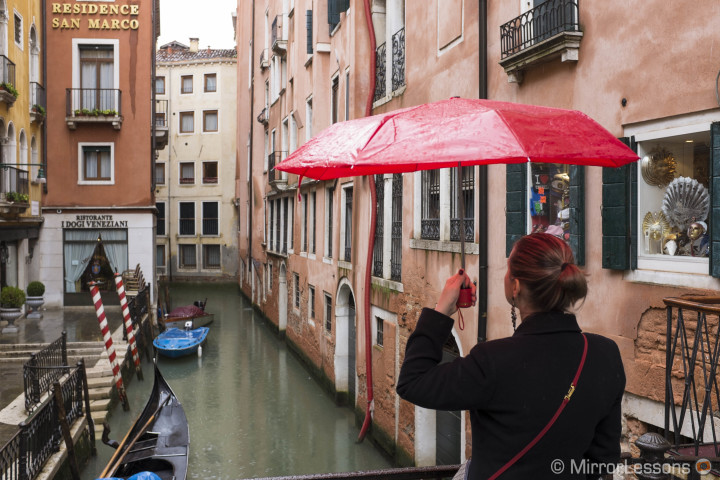
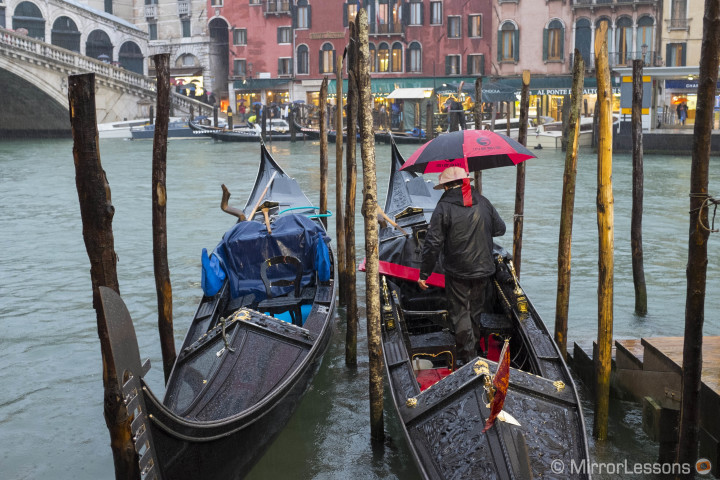
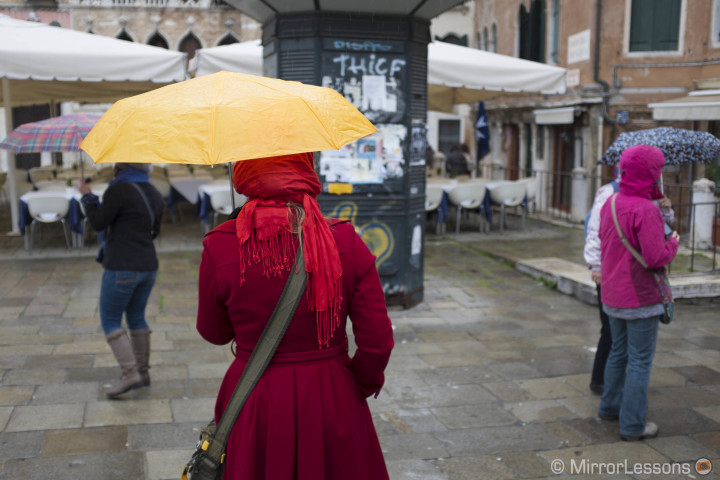

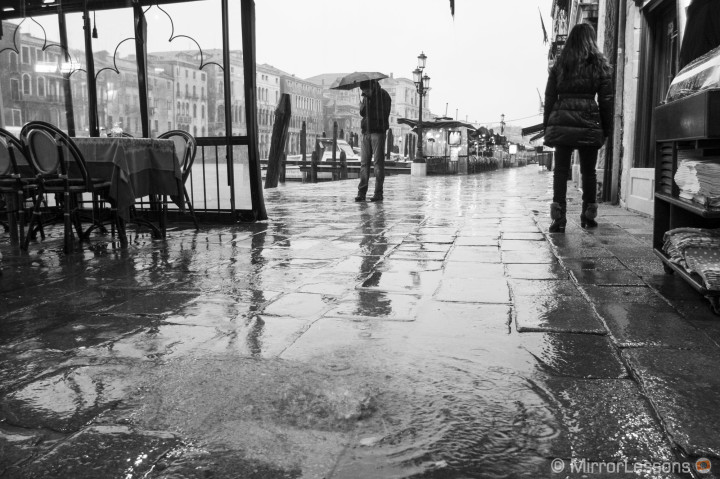
Protect your camera
Unless you are shooting with a full weather-sealed camera such as the Olympus OM-D E-M1 or the soon-to-be released Fujifilm X-T1, there are some precautions you should take. The same goes for lenses that aren’t weather-sealed.
The X100s, for example, isn’t weather sealed but it is a very light and compact camera. So the first tip I can offer is to hold your umbrella in one hand and shoot with the other.
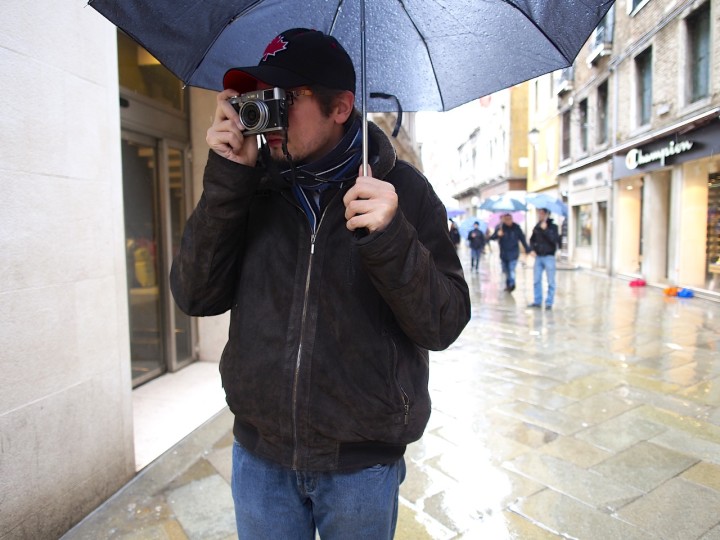
It isn’t the most comfortable solution but if the rain is very intense, it is certainly the best way to protect your camera.
What I often do is keep the camera folded inside my jacket, and when I see something, I will either try to see if I can shoot under some cover like an overhang, or just quickly whip out the camera, take the shot and put it back under my jacket. A few water drops never hurt any camera but you always want to be careful.
Another option could be a rain sleeve such as the one below. You tie the front to the lens end and keep the plastic cover over the camera and your hand. It becomes more difficult to frame your scene but this can also be part of the fun!
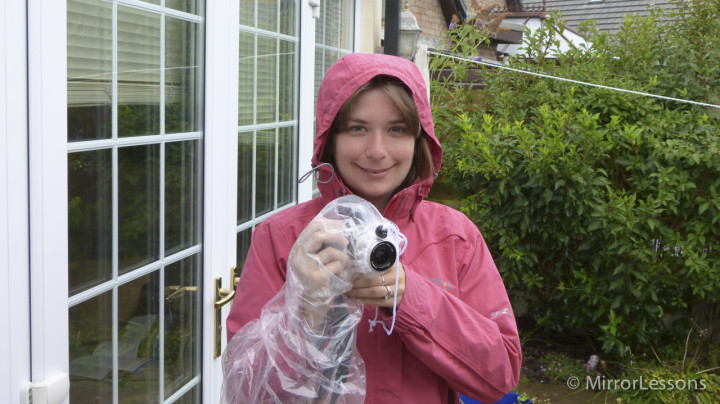
And when it stops raining…
If the rain suddenly stops and the light improves, you really have no excuse not to grab your camera and treat it to a walk around the city! 😉 If you are lucky enough, the sun will offer you some very interesting reflections before the puddles dry up and the world goes back to being its sunny self.

In the end, I think we can say that there are a few reasons not to dislike rain. What are your thoughts about rain photography? 🙂
If you have a nice picture taken on a rainy day, why you don’t share it with us in our Flickr Pool or our Google + Community? See you there!
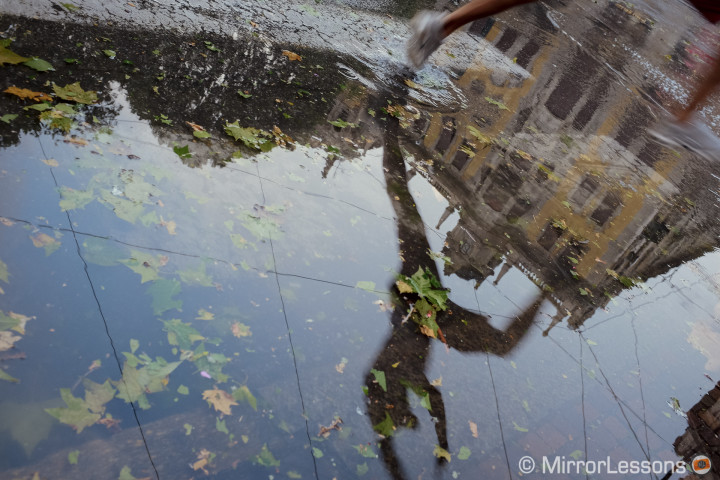

Grazie Giuseppe, per il sostegno continuo!
It’s been the same here. As I once read in a book, Italy is the country of constant sunshine except for that ever-so-brief period between September and April. 😀
If you do get out with your X100s, we’d love to see what you come up with. Some of my rain pictures are actually among my favourites. 🙂
*bookmarked*
I need this article, which apparently coincides with the bad weather here in Jakarta.
It’s been raining cats and dogs for a month, not to mention the occasional floods.
Since then, my motivation to bring my X100s dwindled because the sky was dull and the scene looked bleak.
Perhaps I have to change my perspective a bit: concentrating on the bleakness itself; and of course, puddles won’t hurt either 😀
Siete sempre grandi ragazzi !!!! (Y) 🙂
Somehow the idea of roaming a rainy European city is much more appealing than my hometown of Seattle 🙂
I think those photographs reflecting a scene in puddles are some of the most effective